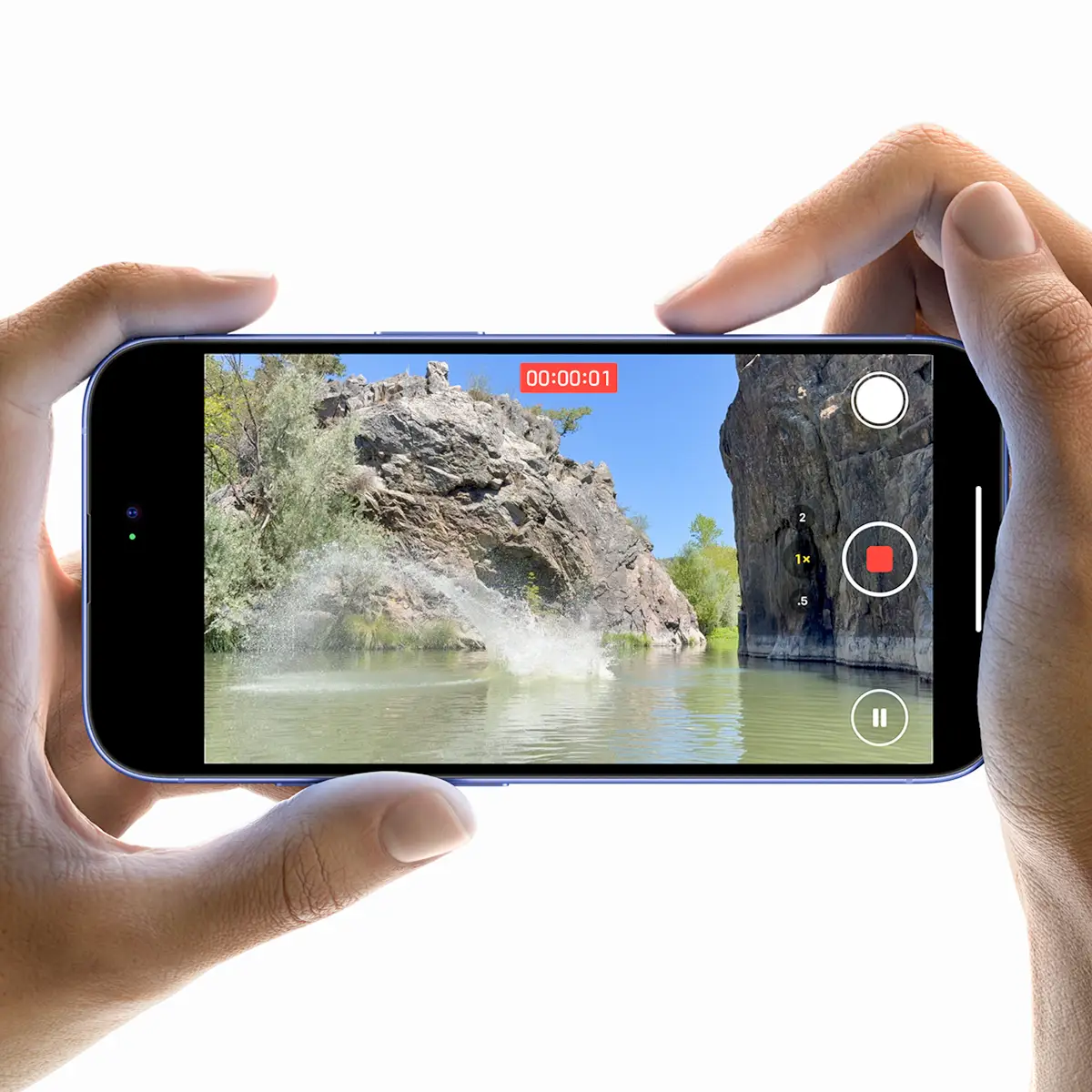The introduction of the iPhone 16 marks a notable moment for digital content creation. Beyond standard performance upgrades, new hardware like the dedicated "Capture Button" and enhanced spatial video capabilities are not just consumer features; they are practical tools that will influence the creation of immersive marketing content and professional digital twins.
This analysis provides a matter-of-fact look at these new features and their strategic implications for businesses.

The Capture Button: Workflow and Content Quality
The new dedicated Capture Button, with its DSLR-like functionality (e.g., half-press to focus, full-press to shoot), is a significant improvement to the content capture workflow. For businesses and creators, this has two primary implications:
- More Efficient High-Quality Capture: The physical button makes it faster and more stable to capture high-quality supplementary photos and videos. This is particularly useful for creating rich media assets that can be embedded within a larger digital twin.
- A Bridge Between Consumer and Pro: While not a replacement for a professional camera, it familiarizes a wider audience with more deliberate, professional-style photography techniques, raising the overall quality of user-generated and prosumer content.
Spatial Video: A New Format for Immersive Marketing
The most significant long-term development is the enhancement of spatial video capture. This is a 3D video format that records depth information, designed for immersive playback on devices like the Apple Vision Pro. It allows businesses to create marketing content that provides a sense of presence and scale that traditional video cannot.
Practical applications include:
- Immersive Product Demonstrations: A potential customer could view a spatial video of a product and perceive its depth and texture as if it were physically present.
- Enhanced Virtual Experiences: A real estate agent could supplement a Matterport tour with spatial videos of key features, such as the view from a balcony or the ambiance of a garden, providing a layer of realism a static 3D model cannot fully capture.
By making spatial video capture a mainstream feature, the iPhone 16 provides the tools for the next generation of digital advertising. Businesses that begin building a library of this content now will be better prepared for the growth of spatial computing platforms.
Implications for Professional Digital Twins
While an iPhone cannot replace the dimensional accuracy and high fidelity of a professional Matterport scanner, its enhanced capabilities enrich the digital twin ecosystem.
- Richer Supplementary Content: Higher-quality photos and spatial videos captured with an iPhone 16 can be embedded within a professional Matterport tour using Mattertags, adding valuable layers of interactive detail.
- Accessible 3D Scanning: The LiDAR scanner in Pro models, combined with the Matterport Capture app, allows for rapid, informal 3D scans. This is a useful tool for preliminary project planning, internal documentation, or smaller spaces where survey-grade accuracy is not required.
- A Bridge to Spatial Computing: The iPhone 16 serves as the primary capture device for the Vision Pro ecosystem. Integrating this content with professional Matterport scans creates a holistic digital asset that is ready for both today's web and the future of spatial computing.
Conclusion
The camera advancements in the iPhone 16 are more than just incremental improvements. They provide practical tools that improve content creation workflows and open the door to new forms of immersive marketing. For businesses, the key takeaway is to view the iPhone not as a replacement for professional tools, but as a powerful, complementary device for creating the rich media and spatial content that will define the next phase of digital engagement.